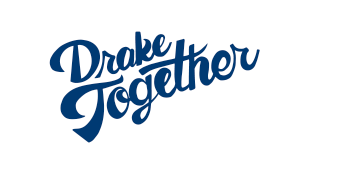Art History
Art History
We live in an image-saturated world but few of us possess the critical tools to analyze images and to understand their use. The art history major will prepare you to navigate the complexity of visual culture, whether past or present, by introducing you to the specialized language and strategies of image making as well as by providing you with a rigorous historical introduction to the production, interpretation, and circulation of images.
Drake’s curriculum employs new models of teaching and theorizing art history in order to acknowledge changes in the field. For example, unlike the long-standing emphasis on chronology in beginning surveys of art history, the introductory courses at Drake employ a thematic approach that traces formal and conceptual concerns across multiple time periods and cultures. Upper-level courses offer critical re-examinations of the categories fundamental to the founding of art history including national tradition, stylistic periods, and definitions of modernity.
Unlike many comparable programs, the study of art history at Drake is fully integrated within the Department of Art and Design. The art history major combines studio experience with an introduction to the practices, theories, and debates of the discipline. Students therefore gain experience in interpreting images as well as in creating them.
Faculty
The Department of Art and Design includes 10 full-time faculty; all hold the highest degrees in their field and are practicing designers, artists and scholars. All full-time faculty are engaged in teaching classes from the introductory to advanced levels.
Careers and Internships
An art history degree can provide you entre to an array of stimulating careers. These could include: museum curator/administrator; museum education; museum registrar; gallery staff/director; researcher; lecturer; art writer; art critic/correspondent for newspaper, magazine, and other publications; art conservator with technical training; historical society work; historic preservation agency work; art education in elementary, secondary, post-secondary, public, and private schools; corporate curator; art appraiser for auction house, art dealer; administrator for public and private arts organizations (NEA, local arts commissions); art librarian; archivist; and curator of visual collections (photo, digital, etc.).
Students can enhance their art and design education and supplement their resume or professional portfolio with internships and off-campus employment in a variety of art-related areas. Students have completed internships for art history credit at the Anderson Gallery, Des Moines Art Center, Salisbury House, the State Historical Society of Iowa, and commercial art galleries.
Drake provides students with many opportunities to engage with art outside the classroom. The Department of Art and Design holds exhibitions of work by students, faculty, and invited artists during the school year, including the annual juried Student Art Exhibition.
Facilities in the Harmon Fine Arts Center include the 3,500-square-foot Anderson Gallery. Providing 1,800 square feet of exhibition space, rooms for handling and storing works of art, and a reception lobby, the Anderson Gallery is an exciting showcase for work by visiting artists, students, and faculty. Art history courses linked to the gallery offer an introduction to the curatorial profession that encompasses exhibition research, design, and public programming. Annual assistantships are available through the gallery, providing students with a unique opportunity for hands-on experience in gallery management. Students also have the opportunity to meet and exchange ideas with exhibiting artists from around the country. The Anderson Gallery is a visible and vital member of the Des Moines art community, attracting local and national visitors.
Adjacent to the Anderson Gallery is the Weeks Gallery, providing an additional 1,000 square feet of exhibition space. The Weeks Gallery is reserved for student exhibitions, from senior thesis shows to group shows by the student-led art club (VAAD). Nationally and internationally recognized artists and other visual arts professionals come to campus each year to give lectures and workshops. In addition, field trips allow students to observe major collections and exhibitions in such cities as Chicago and Kansas City. Drake students also take advantage of the exhibitions and lectures offered by the Des Moines Art Center, internationally recognized for its collection of contemporary art.
Course Requirements
There are no entry requirements for the art history major. Recommended high school courses include foreign language study, history, and art history (if offered). Applicants do not have to show a portfolio to be admitted to the art and design program at Drake. However, students must provide evidence of their work to apply for merit scholarships offered by the Department of Art and Design. Students applying for a scholarship in art history must submit a two-page writing sample. A scholarship application form that requires applicants to submit their work is available via the Department of Art and Design website.
The art history program consists of 26 credit hours of art history supplemented by basic experience in the studio arts for 38 credits total. Familiarity with a foreign language, preferably French or German, is recommended. The capstone experience is a major independent research paper on a subject of the student's choosing that grows out of her/his coursework.
This comprehensive art curriculum is also enhanced with a variety of individualized choices from the Drake Curriculum.
Honors and Accreditations
- The Department of Art and Design is accredited by the National Association of Art and Design (NASAD).
- Art history majors are eligible for the Judy Smith Award in support of their capstone projects.
[back]


